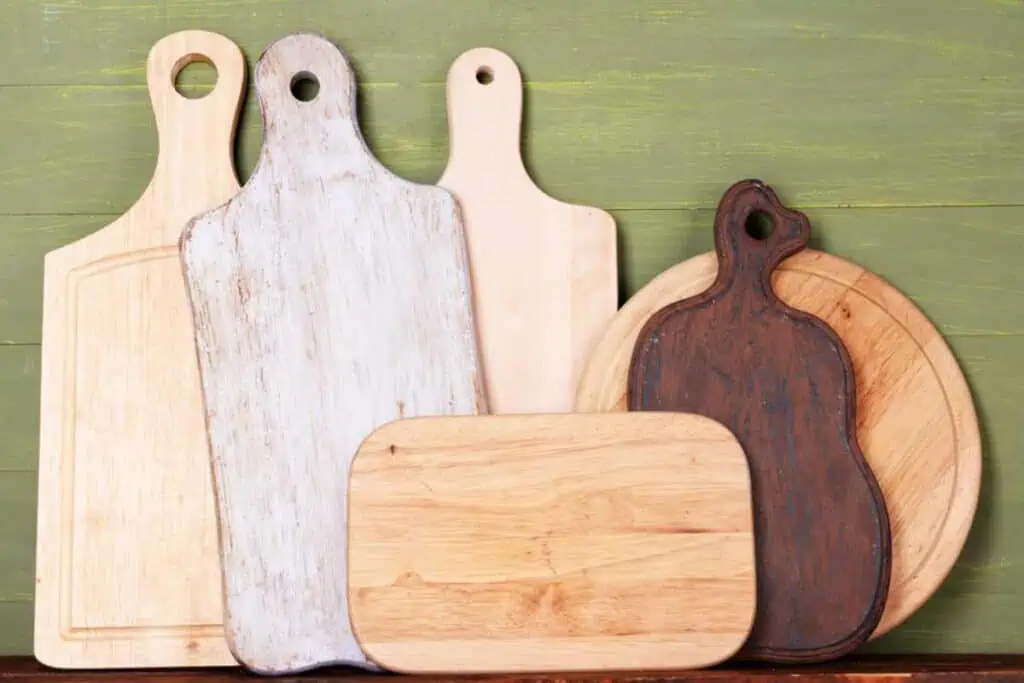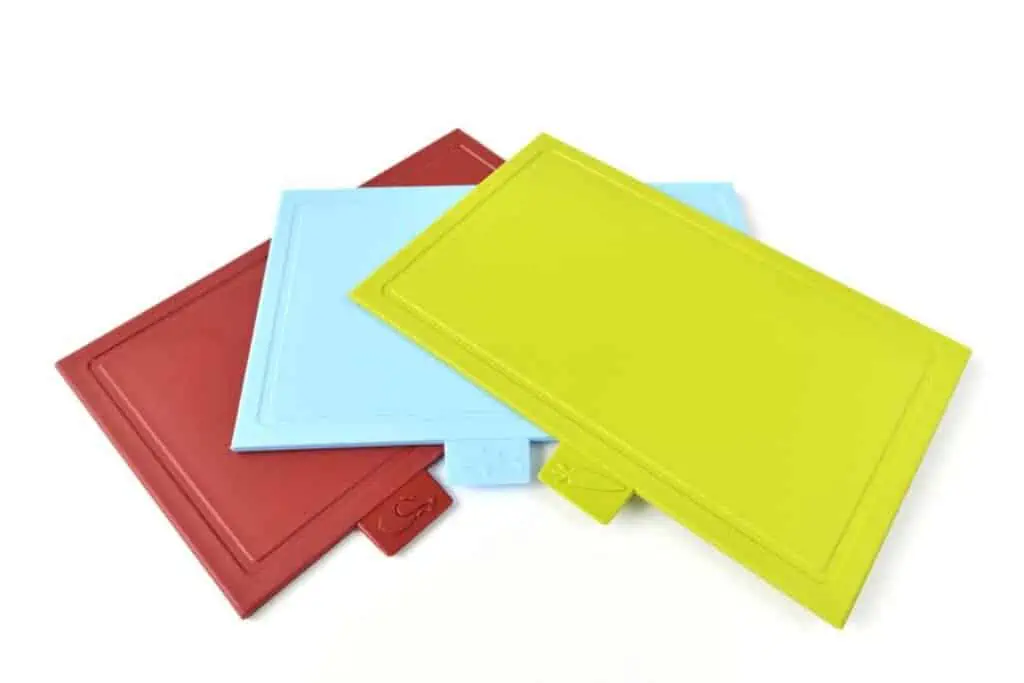Having the right cutting board is key for safe and efficient food prep — but with so many options available today, how do you choose? While a one-size-fits-all solution would be great, in a world of excessive choice, it simply doesn’t exist. Instead, here are the pros and cons of the most popular materials so you can select your perfect cutting board for any kitchen task.

An abundance of choice
Walk into the average grocery store in the United States, and you will find many options for everything from apple varieties to sandwich cookie flavors. With so many selections, most Americans are spoiled for choice. For better or worse, that array of selections expands into most things, including selecting a cutting board.
Once upon a time, a kitchen would have only the option of a wooden butcher block. These days, you can find multiple types of wood, bamboo, plastic, composite, glass and marble in many sizes and shapes and different finishes. Learning about these options and weighing their pros and cons against your personal preferences, budget and intended use will enable you to choose the best option.
The Backyard Table

Get it NOW and level up your outdoor dining! The Backyard Table - Recipes for Summer Cookouts features 34 of Chef Jenn's BEST recipes for outdoor eating and entertaining.
You'll get ad-free recipes like:
- Grilled Corn Guacamole
- Grilled French Onion Burgers
- Deviled Egg Pasta Salad
- Blueberry Grunt
- and so many more!
Every recipe is created, tested and loved by Chef Jenn and her family - there's no AI here!
Get it now, at a special introductory price of $7.99. That's over 50 pages of foodie love at your fingertips!
Buy Now!Wood cutting boards

Many types of wood cutting boards are on the market, and they are one of the most popular options. You can find beautiful, high-quality wood boards made from maple, olive, walnut and cherry wood. They each have distinctive grain patterns that allow them to double as serving platters or carving stations.
Pros: Ideal for practicing knife cuts and chopping fruits and vegetables, wood is a very durable cutting surface, and many types contain natural antimicrobial properties that can help prevent the growth of bacteria. These boards come in multiple weights and sizes. Once the cutting surface of a wood board becomes worn, you can sand it down to create a new surface, extending its life repeatedly.
Cons: Wood cutting boards can be expensive, as pricing depends upon the size, shape and level of craftsmanship involved in creating the board. Additionally, wood boards should not go in the dishwasher. They must be hand-washed and occasionally oiled to prevent cracking or splitting.
Bamboo cutting boards
Similar to wood cutting boards, bamboo boards have a beautiful grain texture. However, bamboo is technically a grass, making it a category of its own. Great for chopping salad ingredients, their popularity has grown quickly in the past few years.
Pros: Bamboo boards are lightweight, durable and have the same antimicrobial properties as wood boards. They are the most eco-friendly option, as bamboo grows quickly and more efficiently than many trees, making it a less expensive product to create and purchase. Like wood, you can sand down the cutting surface of a bamboo board to extend the board’s life repeatedly.
Cons: Care for bamboo is similar to wood in that it must be hand-washed and occasionally oiled to prevent splitting or cracking. Bamboo is denser than many kinds of wood, making it a more rigid surface that will wear your knives slightly more quickly than wood.
Plastic cutting boards

Made from either first-run or recycled plastic, these lightweight boards come in various colors, shapes and sizes. While still found in many kitchens, people love or hate plastic cutting boards.
Pros: One of the biggest reasons people love plastic cutting boards is that they are effortless to clean in a dishwasher. They are non-porous and durable, making them excellent options for meat and poultry, which may expose your kitchen to harmful bacteria.
Cons: Plastic is not an eco-friendly choice, and once the cutting surface becomes damaged through repeated use, you must replace the board. Additionally, the lightweight nature of these boards can make them feel less stable to use.
Composite cutting boards
A newer option on the market, composite cutting boards are composed of a combination of wood, fibers and resin. When it comes to composite boards, you get what you pay for, so be ready to dig a little deeper when sourcing these boards.
Pros: Durable, non-porous and they won’t dull your knives. Many composite boards are plastic-free, and some are made from eco-friendly recycled or recyclable products. Composite boards can go in the dishwasher and need minimal ongoing care to maintain their appearance.
Cons: The resin in some low-end composite boards can leave you questioning its material and wondering whether it is genuinely non-toxic or recyclable at the end of its life span. While it’s often advertised as a more eco-friendly option than plastic, it’s hard to see if that claim is valid without knowing what goes into it.
“I use different material cutting boards for different applications. I have a special resin board for meat, wood for vegetables and other things. The board I love is made by Victorinox, and it’s from the Epicurean Kitchen Series. Investing in a good cutting board is crucial for protecting your knives, and I would never use glass or marble.”
— Ksenia Prints, At the Immigrant’s Table
Glass cutting boards
Glass boards are included in this article mainly to warn you not to use them. They are very hard and dull your knives quicker than any other option. Additionally, they are prone to cracking and chipping, and it’s easy for knives to slip on a glass surface, making them a lousy choice for kitchen safety. The best use for a glass cutting board is as home decor or setting up a grazing board.
Marble cutting boards
Marble boards are the least standard option. Like glass, marble is an incredibly hard surface that will dull your knives if used as a cutting surface. Unlike glass, marble boards have an intended culinary use in the kitchen but are not for cutting up fruits and vegetables.
Marble is a surface that retains a cool temperature and is naturally non-stick, making it an excellent option for rolling out pie dough, cookies and other pastries. Additionally, it is gorgeous and works well for cheese boards, charcuterie boards or dessert displays.
Tips for using a cutting board

Regardless of which cutting board surface works best for you, there are a few tips to remember when choosing its size and shape.
- Use the right size board for the task. Carving a holiday turkey will need more space than slicing an apple for a snack.
- Consider both the space where you will use the board and store it. That big beautiful board will become less appealing if you have no place to keep it.
- If your board is wiggling, place a thin, wet towel underneath it to help it stick to the countertop and increase stability.
- When cutting something juicy, like a watermelon or roast, turn the board so that the juice grooves are up and can help retain the excess liquid.
Choosing your perfect cutting board
The ideal cutting board for you and your kitchen is a personal choice. Weighing the pros and cons of the materials, including the environmental impact, required care and the effect they will have on your knives will impact how you make that decision. Once you have narrowed down the type of board you want, consider your personal preferences, kitchen space, and cutting needs to help select the board’s size, shape, and additional features. A well-chosen cutting board will make meal preparation more manageable and enjoyable, but only you can decide.
This article originally appeared on Food Drink Life.
